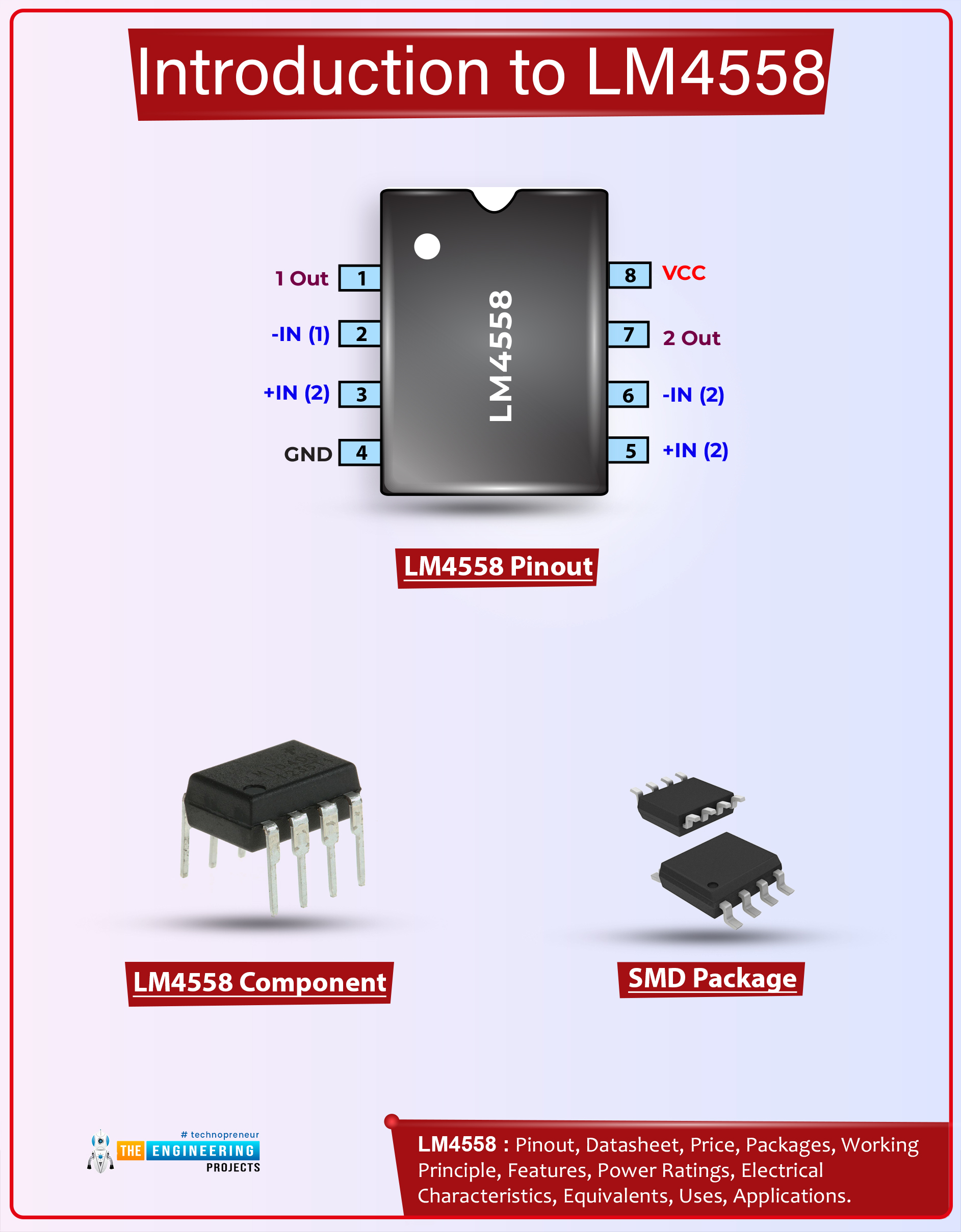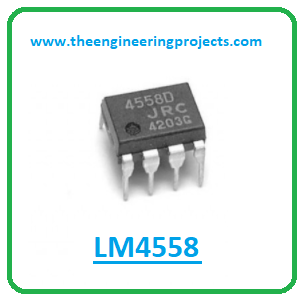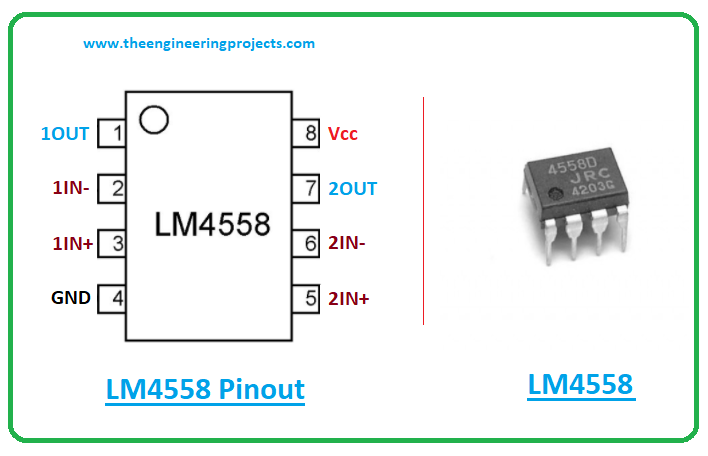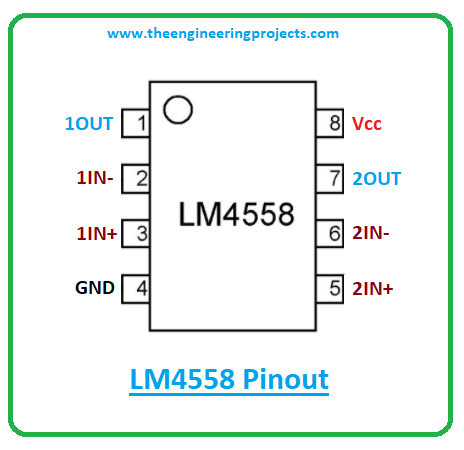
Hi Friends! I welcome you on board. Happy to see you around. In this post today, I’ll walk you through the Introduction to LM4558.
LM4558 is a dual-operational amplifier that comes with two amplifiers on board. This device belongs to the LM’xx’ family where LM stands for linear monolithic which means, it is made of analog components that are incorporated into the silicon piece.
This component comes with an internal frequency compensation method that guarantees the device's stability without the need for external components.
I suggest you read this post all the way through as I’ll detail the complete Introduction to LM4558 covering datasheet, pinout, features, and applications. Continue reading.
Introduction to LM4558
- LM4558 is a monolithic dual-operational amplifier that carries two amplifiers on board.

- This device belongs to the LM’xx’ family where LM stands for linear monolithic which demonstrates the availability of analog components that are incorporated on the silicon piece.

- It comes with a high common-mode input voltage range and no latch-up on this device makes it an ideal pick for voltage-follower applications.
- This chip comes with an internal frequency compensation method that guarantees the device's stability. Moreover, it is protected against short-circuiting.
- The device can be utilized in the op-amp operation circuits including differential amplification, comparators, and mathematical operations.
- As this component exhibits two independent amplifiers on board, it is capable of performing two completely different operations at the same time which makes it a suitable pick for several applications.
- The LM4558 comes with an operating temperature range from 0ºC to 70ºC while the total power dissipation is 200mW.
- The common-mode Rejection Ratio CMRR is 80dB and these amplifiers feature low noise interference.

LM4558 Datasheet
While working with this device, it’s wise to go through the datasheet of the component that features the main characteristics of the component. You can download the datasheet of LM4558 by clicking the link below.
LM4558 Pinout
This chip is an 8-pin device. The following figure shows the pinout diagram of LM4558.

The following table represents the pin name and pin description incorporated on the chip.
| Pin Description of JRC4558 | ||||
|---|---|---|---|---|
| Pin No. | Pin Description | Pin Name | ||
| 1 | The output pin of the Op-amp 1 | 1OUT | ||
| 2 | The inverting input of Op-amp 1 | 1IN- | ||
| 3 | The non-inverting input of Op-amp 1 | 1IN+ | ||
| 4 | Ground or Negative supply terminal | GND | ||
| 5 | A non-inverting input of Op-amp 2 | 2IN+ | ||
| 6 | The inverting input of Op-amp 2 | 2IN- | ||
| 7 | The output pin of the Op-amp 2 | 2OUT | ||
| 8 | Positive supply terminal | VCC | ||
LM4558 Features and Specifications
The following are the main features and specifications of LM4558.
- Low noise interference among op-amps
- Dual Supply Operation = +15V and -15V
- No frequency Compensation Required
- Operating temperature = 0ºC to 70ºC
- Common-Mode Rejection Ratio CMRR = 80dB
- Two independent operational amplifiers
- Built-in Short-Circuit Protection
- No latch-up
- Large common mode and differential voltage range
- Total power dissipation = 200mW
- Parameter tracking over a temperature range
- Carries low noise input transistors
- Phase and gain match between amplifiers
- Moisture Sensitivity Level 3
- Single Supply Operation = +5.0 V to +15 V
LM4558 Applications
The LM4558 is used in the following applications.
- Used in Measuring instruments
- Employed in Industrial applications
- Incorporated in Logic voltage translation
- Used in voltage comparators and peak detectors
- Employed in oscillators and amplifiers
- Used in mathematical operations
That’s all for today. I hope you’ve enjoyed reading this article. If you have any questions, you can pop your queries in the section below, I’d love to help you the best way I can. You are most welcome to share your valuable feedback and suggestions around the content we share so we keep coming back with quality content customized to your exact needs and requirements. Thank you for reading the article.



